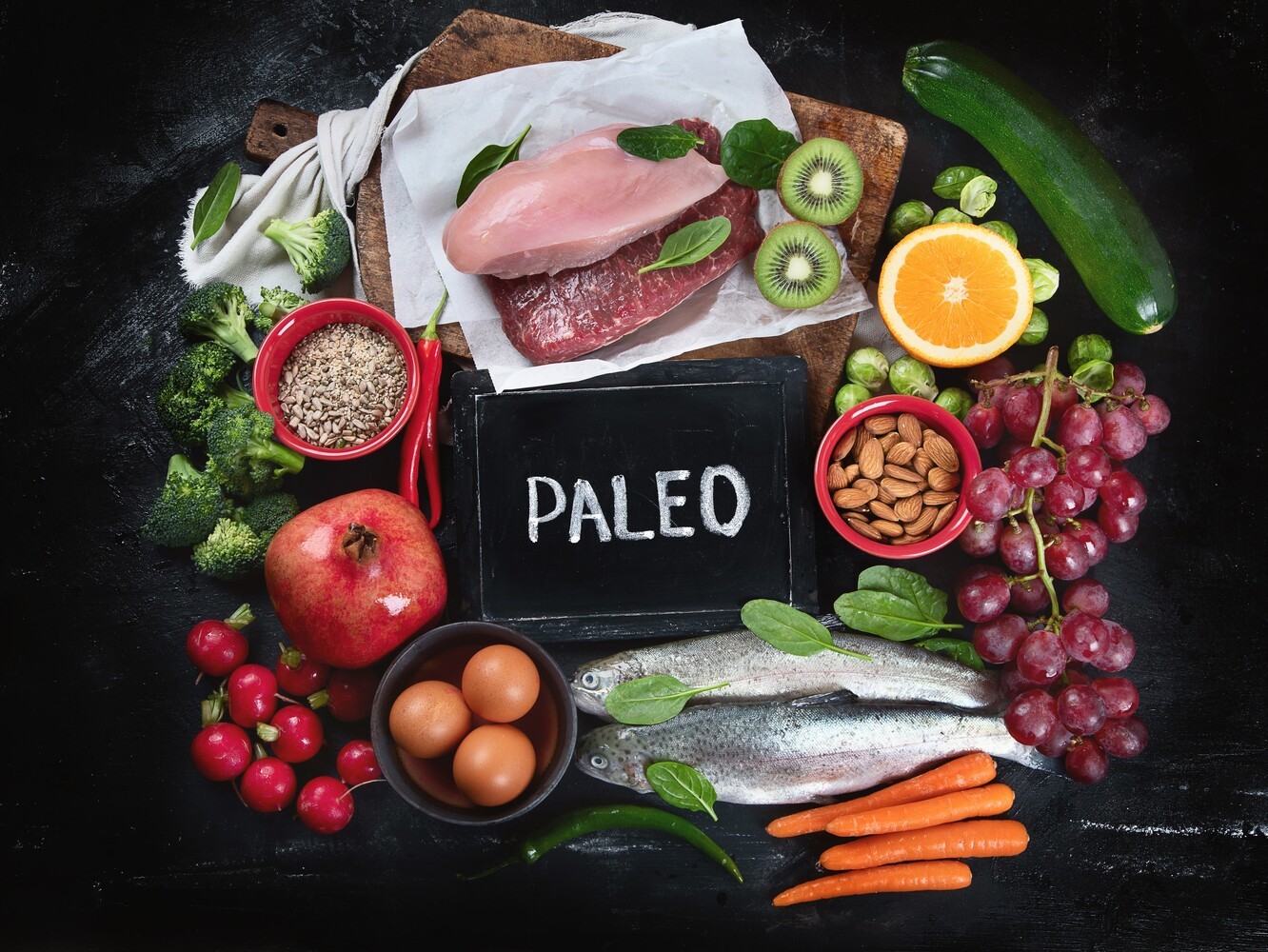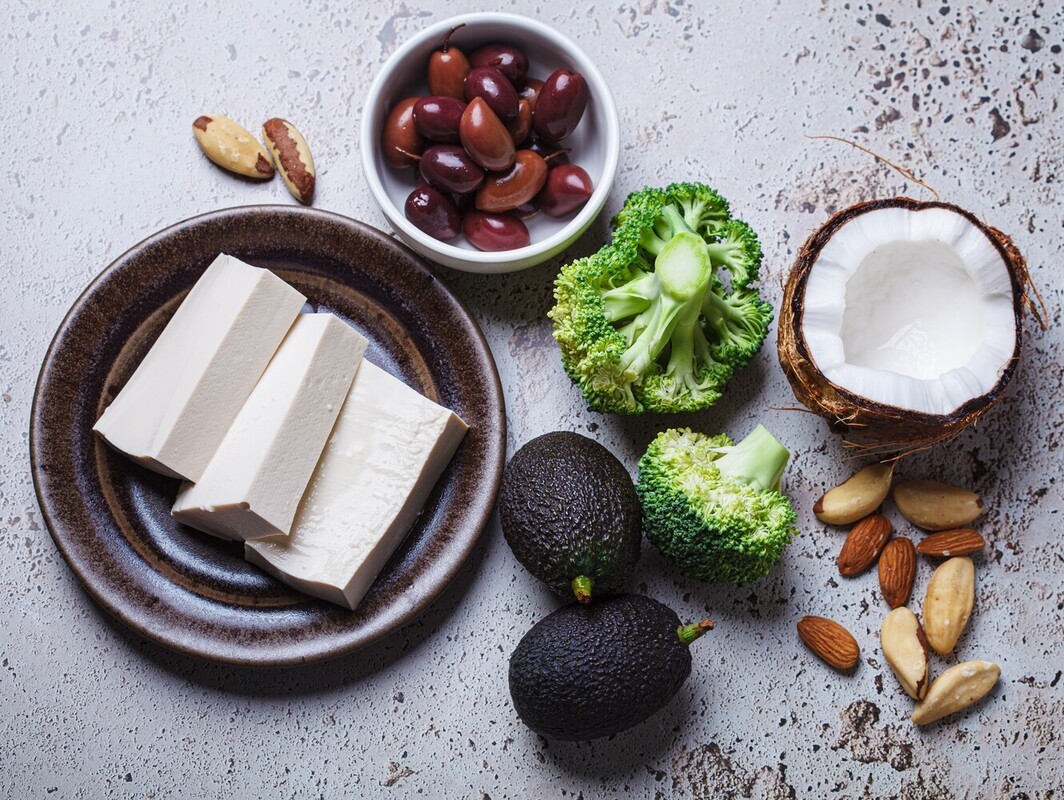The paleo diet plan is an eating approach based on the foods our hunter-gatherer ancestors may have eaten, focusing on whole, unprocessed ingredients like lean meats, fish, fruits, vegetables, nuts, and seeds.
It eliminates grains, legumes, dairy, and processed foods, with the idea that our bodies function best on the foods we evolved to eat. But is cutting out entire food groups necessary – or even safe? Does it actually lead to better health?
After putting it to the test and reviewing the research, we’ve seen that the paleo diet has both benefits and risks or challenges. In this article, we’ll break down what is the paleo diet plan, why it's so popular, how it works, what to eat, what to avoid, and whether it’s the right fit. Plus, we’ve included a 7-day meal plan to make getting started simple.
What Is The Paleo Diet?
The paleo diet is based on eating whole, unprocessed foods that our prehistoric ancestors would have had access to. That means lean meats, fish, vegetables, fruits, nuts, and seeds—but no grains, legumes, dairy, or processed foods.
According to our research, the idea behind paleo is that our bodies haven't evolved to digest modern agricultural foods like grains and dairy properly.
Some experts believe that this “mismatch” between our genetics and our current diet contributes to obesity, diabetes, and heart disease. While the science isn’t entirely settled, many people have found success with this eating plan.
Why Is The Paleo Diet So Popular?
The paleo diet gained traction due to its focus on whole, nutrient-dense foods while eliminating processed ingredients. Unlike restrictive, calorie-counting diets, paleo encourages eating until you're satisfied.
According to our research, potential benefits associated with the paleo diet include:
Weight loss (without needing to count calories)
Better blood sugar control (helpful for those at risk for diabetes)
Reduced inflammation (linked to lower risk of heart disease)
More energy and fewer processed cravings
While it’s not a one-size-fits-all approach, many people find it easier to stick to than diets that rely on portion control or calorie counting.
How Does The Paleo Diet Work?
At its core, the paleo diet eliminates processed foods and focuses on natural, whole ingredients.
Here’s a simple breakdown of how it works:
Eat nutrient-dense, whole foods – Think lean proteins, healthy fats, and fiber-rich fruits and vegetables.
Avoid processed and refined foods – This includes grains, dairy, and anything high in added sugar.
Prioritize quality ingredients – Grass-fed meats, wild-caught fish, and organic produce are encouraged.
One important note: While the diet eliminates grains and dairy, it doesn’t necessarily mean those foods are “bad” for everyone. Many nutrition experts question whether completely cutting them out is necessary.
Each person’s needs are different. While the paleo diet might work best for you, you might also find something like the fruitarian diet plan or a metabolic diet plan better.
Your Berry Street Registered Dietitian can best counsel you for finding the right nutrition plan for your goals and overall health. The paleo diet might not work for you, but there are customized options available.
What Foods Can You Eat On The Paleo Diet?
After putting it to the test, we’ve found that paleo-friendly foods are all about keeping it simple and natural.

Approved foods include:
Lean meats (grass-fed beef, chicken, turkey, pork)
Fish and seafood (wild-caught salmon, tuna, shrimp)
Eggs
Fruits and vegetables
Nuts and seeds
Healthy oils (olive oil, coconut oil, avocado oil)
Some versions of paleo allow tubers like sweet potatoes, and even limited dairy (like grass-fed butter).
What Foods Should You Avoid On The Paleo Diet?
The foods that aren't allowed on the paleo diet are those introduced with modern farming.
Avoid these foods:
Grains (wheat, rice, oats, corn)
Legumes (beans, lentils, peanuts)
Dairy (milk, cheese, yogurt)
Refined sugar and artificial sweeteners
Processed foods (anything made in a factory)
If it comes in a package with a long ingredient list, it’s probably not paleo-approved.
Advantages And Disadvantages Of The Paleo Diet
Advantages
Encourages whole, nutrient-dense foods
May aid in weight loss and improve metabolism
Eliminates processed, high-sugar foods
Can reduce inflammation and promote heart health
Disadvantages
Eliminates entire food groups (grains, legumes, dairy)
May be expensive (grass-fed meats, organic produce)
Hard to maintain long-term
May lack certain nutrients (like calcium and fiber from grains)
Not appropriate for all medical conditions or health goals
From our experience, flexibility is key—some people follow a “modified paleo” approach that allows for occasional dairy or gluten-free grains.
Your Berry Street Registered Dietitian can help you understand if the palo diet is right for you.
7-Day Paleo Diet Meal Plan
This 7-day meal plan is designed to make the paleo diet simple and enjoyable. Each day features balanced meals packed with protein, healthy fats, and fiber to keep you satisfied.

Looking for a personalized paleo meal plan tailored to your specific goals, dietary needs, and lifestyle? A Registered Health Dietitian at Berry Street can create a custom 7-day meal plan just for you, ensuring you get the right balance of nutrients while making the diet easy to follow. Reach out today to get started!
Day 1
Breakfast: Scrambled Eggs With Spinach And Avocado
A high-protein breakfast is a great way to start the day, and scrambled eggs provide just that. Cooked with a bit of olive oil or ghee, the eggs stay fluffy and rich in healthy fats.
Toss in a handful of fresh spinach for fiber and essential vitamins, letting it wilt slightly for a softer texture. Serve with sliced avocado on the side for an extra boost of heart-healthy fats and a creamy texture that balances the dish.
Snack: Mixed Nuts And Fresh Berries
A simple, grab-and-go snack that offers a mix of healthy fats, fiber, and natural sweetness, making it the perfect snack for a high-fiber meal plan.
Almonds, walnuts, and cashews provide crunch, while fresh berries add antioxidants and a burst of flavor. Keep portion sizes in check by pre-measuring a small handful to avoid over-snacking.
Lunch: Grilled Chicken Salad With Olive Oil Dressing
This light yet satisfying lunch includes grilled chicken breast, crisp greens, cherry tomatoes, cucumber, and shredded carrots. Drizzle with extra virgin olive oil and fresh lemon juice for a simple, flavorful dressing. For added texture and nutrients, sprinkle on some sunflower or pumpkin seeds.

Dinner: Baked Salmon With Roasted Vegetables
Wild-caught salmon is rich in omega-3 fatty acids, which support heart health. Season it with salt, pepper, and garlic, then bake until flaky. Pair with a mix of roasted vegetables like zucchini, bell peppers, and cauliflower, lightly tossed in olive oil and roasted until golden brown.
Day 2
Breakfast: Banana-Almond Smoothie With Coconut Milk
This creamy smoothie is packed with natural energy. Blend a ripe banana with unsweetened coconut milk, a spoonful of almond butter, and a sprinkle of cinnamon for warmth and depth of flavor. Add ice for a refreshing texture, or toss in some chia seeds for extra fiber.
Snack: Hard-Boiled Eggs And Carrot Sticks
Hard-boiled eggs are an easy, protein-packed snack that keeps you full. Pair them with crunchy carrot sticks for a dose of vitamins and natural sweetness. Sprinkle a little sea salt on the eggs for extra flavor.
Lunch: Leftover Salmon And Veggies
Leftovers make lunchtime easy. Reheat the baked salmon from the night before and enjoy it over a bed of greens or alongside roasted vegetables. A drizzle of olive oil and a squeeze of lemon can freshen up the flavors.
Dinner: Grass-Fed Beef Stir-Fry With Bell Peppers
This quick and flavorful stir-fry features thinly sliced grass-fed beef, sautéed with colorful bell peppers, garlic, and onion. Cook everything in coconut oil for a rich, slightly sweet flavor. Serve over a bed of cauliflower rice for a filling, grain-free alternative.
Day 3
Breakfast: Omelet With Mushrooms And Onions
Eggs are the star of this meal again, but this time in the form of a fluffy omelet. Sauté mushrooms and onions until tender, then fold them into the eggs for a savory, nutrient-rich breakfast. Serve with a side of fresh berries for a hint of sweetness.

Snack: Apple With Almond Butter
Crisp apple slices paired with creamy almond butter make for a simple yet satisfying snack. The combination of fiber and healthy fats keeps blood sugar stable and hunger at bay.
Lunch: Chicken Lettuce Wraps With Avocado
Swap traditional tortillas for crisp lettuce leaves to keep this meal paleo-friendly. Fill them with shredded grilled chicken, sliced avocado, and a touch of salsa for a light but flavorful lunch.
Dinner: Baked Cod With Steamed Broccoli
Mild and flaky cod is a great source of lean protein. Bake it with lemon juice, garlic, and fresh herbs for a simple yet delicious dish. Pair with steamed broccoli tossed in olive oil and sea salt.
Day 4
Breakfast: Scrambled Eggs With Sweet Potatoes
Sweet potatoes add a natural sweetness and complex carbs to this protein-packed breakfast. Roast diced sweet potatoes in coconut oil until golden, then serve alongside fluffy scrambled eggs.
Snack: Handful Of Walnuts And A Boiled Egg
Walnuts provide healthy fats, while a boiled egg adds protein, making this a balanced and easy snack to take on the go.
Lunch: Turkey And Avocado Salad
Sliced turkey breast pairs perfectly with mixed greens, sliced avocado, and cherry tomatoes. Toss with olive oil and balsamic vinegar for a simple yet delicious dressing.
Dinner: Grilled Shrimp With Roasted Asparagus
Marinate shrimp in olive oil, garlic, and lemon juice, then grill until tender. Serve with roasted asparagus, seasoned with sea salt and black pepper for a simple, nutrient-rich meal.

Day 5
Breakfast: Coconut Yogurt With Berries And Nuts
Dairy-free coconut yogurt provides a creamy base for this nutrient-dense breakfast. Top with fresh berries and a handful of nuts for crunch and natural sweetness.
Snack: Sliced Cucumber With Guacamole
Refreshing cucumber slices pair well with creamy guacamole. The combination of fiber and healthy fats makes this a great midday snack.
Lunch: Leftover Shrimp And Asparagus
Use last night’s shrimp and asparagus to create a quick and easy lunch. Reheat and serve with a side of mixed greens for a light, refreshing meal.
Dinner: Roasted Chicken With Cauliflower Mash
Roasted chicken thighs are juicy and full of flavor. Serve them with a creamy cauliflower mash made with olive oil and garlic for a comforting, paleo-friendly dinner.
Day 6
Breakfast: Fried Eggs With Sautéed Kale
A simple, nutrient-dense breakfast featuring fried eggs cooked in avocado oil and a side of sautéed kale. The greens add fiber and a boost of vitamins.
Snack: Mixed Nuts And An Orange
A handful of nuts provides healthy fats, while an orange adds a refreshing burst of vitamin C.
Lunch: Beef Lettuce Tacos With Salsa
Seasoned ground beef is served in crisp lettuce cups, topped with fresh salsa and avocado slices. This is a great grain-free take on traditional tacos.
Dinner: Baked Salmon With Zucchini Noodles
Flaky baked salmon pairs well with spiralized zucchini noodles tossed in olive oil and garlic. A squeeze of fresh lemon enhances the flavors.
Day 7
Breakfast: Scrambled Eggs With Avocado And Bacon
Crispy bacon adds crunch and rich flavor to scrambled eggs, while avocado provides a creamy contrast. This is a satisfying way to start the day.

Snack: Celery Sticks With Almond Butter
Celery sticks offer a satisfying crunch, while almond butter provides a dose of healthy fats and protein.
Lunch: Tuna Salad With Olive Oil And Lemon
Canned tuna is mixed with olive oil, fresh lemon juice, and diced vegetables for a refreshing and protein-packed salad. Serve over a bed of greens.
Dinner: Grilled Steak With Roasted Brussels Sprouts
A perfectly grilled steak makes for a hearty paleo dinner. Pair it with roasted Brussels sprouts, cooked in olive oil until crispy and golden brown.
Looking for something a little bit different? Be sure to check out our 30-30-30 diet plan and our cirrhosis diet plan as well.
Conclusion
The paleo diet focuses on whole, unprocessed foods like lean meats, fish, vegetables, fruits, nuts, and seeds while cutting out grains, legumes, dairy, and processed ingredients.
It’s popular for its potential benefits, including weight loss, improved blood sugar control, and reduced inflammation, though it also comes with challenges like food restrictions and cost. Finding the right approach—whether a strict paleo or a more flexible version—depends on personal goals and lifestyle.
If you're considering the paleo diet but aren’t sure where to start, working with a Registered Dietitian covered by insurance at Berry Street can help you create a plan that fits your needs. Reach out today to find expert guidance and support on your nutrition journey!







